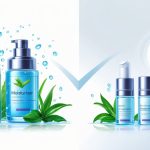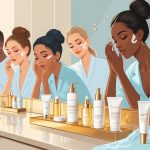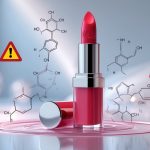Moisturizer Brands Making Big Promises Dermatologists Now Question
Understanding Skin Types and Moisturizer Selection
You know what drives me nuts? “For all skin types” on every label. As if everyone’s face acts the same. My T-zone is an oil slick, my cheeks are desert-dry, and sometimes both at once. Brands love big promises, but my dermatologist friend just groans at “universal hydration.” Skin isn’t that simple.
Oily, Dry, and Combination Skin
My forehead could double as a mirror, but my cheeks crack if I blink too hard. Combination skin is a joke, honestly. For oily skin, if it’s not non-comedogenic, it’s a no. Gel creams with hyaluronic acid—no heavy oils—help, but “matte finish” only lasts till lunch.
Dry skin? You need a thick balm, ceramides all the way. A dermatologist once told me to stick with CeraVe or La Roche-Posay, but half the time I just grab whatever’s close and regret it by the afternoon. Combination skin? Some people layer two products. I try to avoid sulfates, but sometimes I forget. Consistency is boring but works better than chasing trends.
Vogue’s lists claim every brand is a miracle, but knowing your skin type matters way more than the fancy label (see this Vogue list for the breakdown).
Sensitive Skin and Rosacea
I tried a “soothing” lotion that burned worse than aftershave—so much for gentle. Sensitive skin isn’t just about spicy food; rosacea can flare from weather, detergent, even “natural” extracts. Dermatologists always warn against fragrances, alcohols, and even essential oils (yes, chamomile can be a problem).
If your cheeks tingle before you even put anything on, skip the “deep penetrating” stuff. Go for hypoallergenic, dermatologist-tested, or super basic formulas. My routine’s boring but at least I’m not itchy—Centella asiatica, niacinamide, colloidal oatmeal, those actually have research.
Some Harvard dermatologist once insisted mineral sunscreen is a must, but honestly, who remembers every day? Rosacea needs no chemical irritants. If you layer products, go slow—wait 30 seconds between each. Always patch-test. For more advice, I actually trust this Manual article.
Mature and Aging Skin
So, one day you wake up and—bam—your forehead’s a roadmap and the “plumpness” you took for granted is suddenly MIA. I mean, when did that happen? My dermatologist (who’s probably tired of me asking) says after 45, everything gets drier, saggier, grumpier. Retinol, peptides, squalane—supposedly the holy trinity. But let’s be real, not a single brand says their “anti-aging” jar is just a moisturizer with extra marketing.
SPF every morning? Yeah, yeah, everyone with a white coat yells about it. It’s the only thing that’s actually proven to slow down the whole aging parade. Not exciting, but I guess it’s true. I’ve found that slapping a humectant (glycerin, hyaluronic acid, pick your poison) under a thick moisturizer actually does more for my skin than any $80 “overnight renewal” cream. Oh, and my jawline? Loves rich creams. My crow’s feet? Nope, they throw a fit unless I stick with boring, fragrance-free ceramide stuff.
I keep doing this—retinoid at night, SPF by day, gentle cleansers on repeat. Does it erase wrinkles? Absolutely not. Don’t get your hopes up. And by the way, SkinCeuticals has a whole page about picking moisturizers for aging skin, but skips over the fact that hydration alone won’t fix sagging. Eventually, everyone’s skin turns on them—sometimes because of the exact “miracle” stuff we’re told to buy.
Active Ingredients vs. Marketing Hype
Look, I wish I had a fact-checker attached to every moisturizer I buy. The number of “miracle” creams that have let me down? I stopped counting. Even after I memorized the ingredient lists, I still get duped. The sharpest people I know? They ignore the shiny promises and just flip to the ingredient list.
The Role of Vitamin C and Niacinamide
Here we go again—another serum, another “7-day glow” claim. Did you know vitamin C and niacinamide are in over 60% of new serums at fancy stores? Wild. But nobody mentions they’re just hoping for stable formulas, not chasing a citrus-scented miracle.
Vitamin C? I only trust L-ascorbic acid over 10%. Anything less, or in a clear bottle, is basically a waste—air, heat, and light nuke it before you even finish the bottle (Cosmetics Design). Niacinamide’s legit for calming redness and smoothing texture, but if the label doesn’t say 4-5%, it’s probably just a sprinkle for marketing. Going higher? Sometimes just means more irritation, not more results. Ignore the “glass skin” hype and look for basic, properly dosed stuff—boring, but it works.
The Truth About Retinol
Retinol is the ingredient that won’t leave me alone. It’s in everything now—moisturizers, eye creams, you name it. Does .3% count? Is bakuchiol actually safer? Dermatologists are pretty blunt: if your retinol isn’t in an opaque package, with the percentage right there (0.1%-0.5% for newbies), you’re mostly paying for hope.
I fell for a “gentle” retinol once—just got flaky, no results. Tons of brands swap real retinoids for weaker stuff and never tell you how much is in there. If you don’t see “retinol,” “retinal,” or “retinyl palmitate” high up on the list, you’re just buying expensive shea butter. The wrinkle claims? So fuzzy, it’s almost a joke. I want a sticker that says, “shrinks pores in your imagination.”
Aloe Vera, SPF, and Antioxidants
SPF 15 plus aloe vera? I see it everywhere, but has anyone actually trusted that over a real broad-spectrum SPF 30? Doubt it. Dermatologists are obsessed with reapplying and using enough, and yet brands keep slapping both on the label, then toss in “superfruit” antioxidants that barely make the ingredient list.
Aloe? Unless it’s 100% gel (and it never is), it’s mostly water. SPF in moisturizer? Nice idea, but unless you’re using a full teaspoon and reapplying, you’re not getting what the label promises. Vitamin E, green tea, all those extras—maybe helpful, but only if they’re actually concentrated and stable, not just in trace amounts under “fragrance.”
I want ingredient tables on every product but, of course, nobody does that:
| Ingredient | Effective Use | Misleading Hype Example |
|---|---|---|
| Vitamin C | 10-20%+ L-ascorbic acid, airtight packaging | “Brightening” with less than 5% or in open jars |
| Niacinamide | 4-5% range | “Minimizes pores” without listed % |
| Retinol | 0.1-1%, opaque tube | “Softens wrinkles” in see-through containers |
| SPF | 30+, broad-spectrum, reapply | “All-day protection” in a moisturizer used once a.m. |
| Aloe Vera | 100% aloe or >50% extract | “Soothing blend” with aloe after preservatives |
Does this make shopping easier? Maybe if you remember most of the shelf is just marketing with a ring light, and you need to stare at the ingredient list, not the shiny promise.



